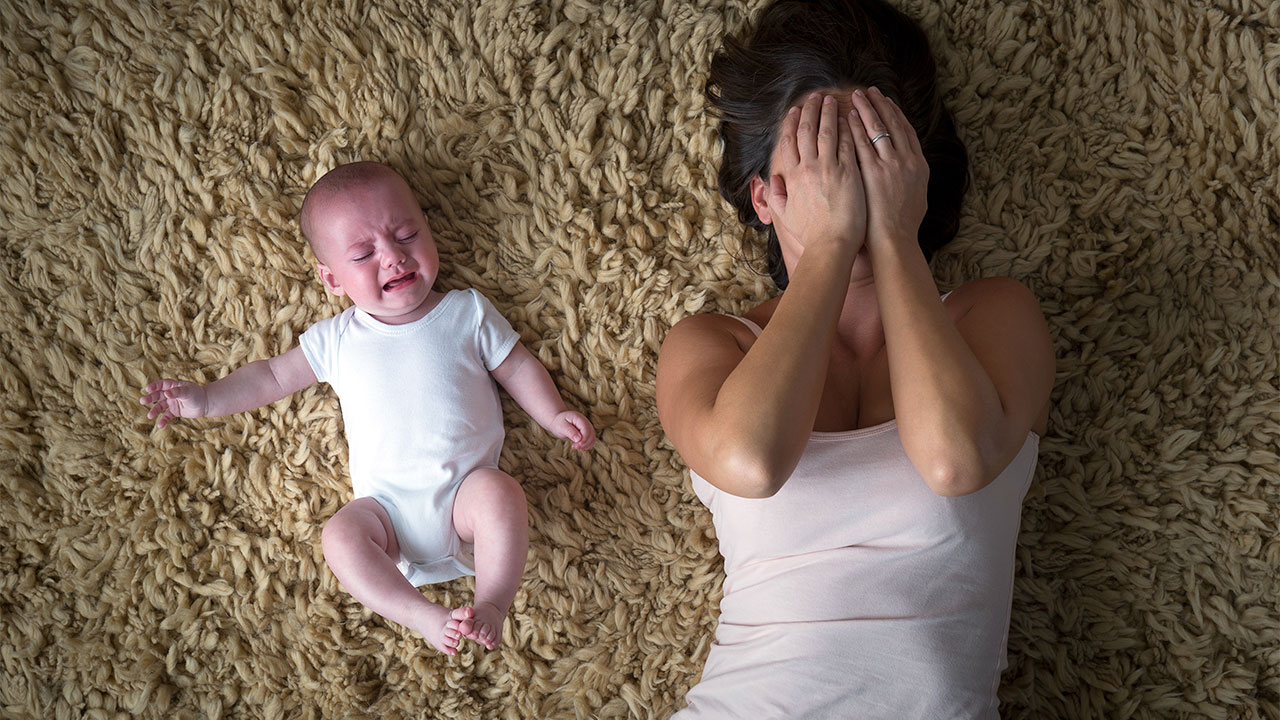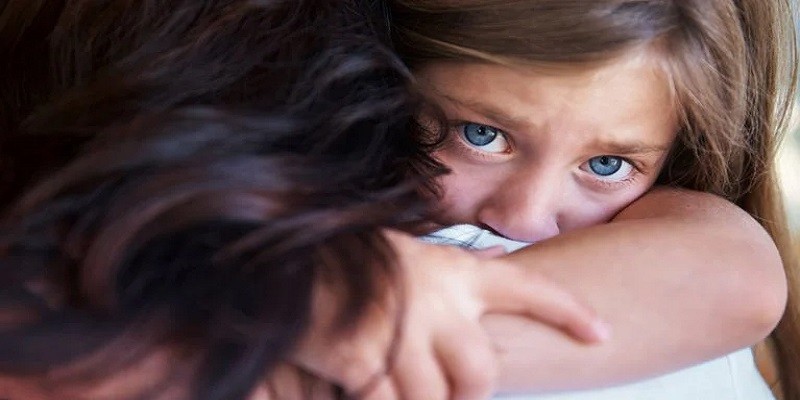Last Updated on January 15, 2025
Yes, it is possible to emotionally damage a child through certain actions or behaviors. Here’s a thorough look at the potential effects and signs of emotional damage in children.
Parents and caregivers hold significant influence over a child’s emotional well-being. It is crucial to provide a nurturing environment that supports their emotional growth and development. However, there are instances where actions or behaviors unintentionally cause emotional harm, potentially leading to long-lasting negative effects on the child’s mental health.
Identifying whether you have emotionally damaged your child requires understanding the signs and being open to self-reflection. This article aims to delve into the topic and shed light on the potential impact of emotional damage, equipping you with the knowledge needed to address and rectify any harmful interactions. By recognizing the signs and taking appropriate steps, it is possible to foster healing and create a positive emotional environment for your child.
Recognizing The Signs And Effects Of Emotional Damage
As parents, we strive to provide a loving and nurturing environment for our children. However, sometimes we may unknowingly cause emotional damage that can have long-lasting effects on their well-being. It is important to be aware of the signs and effects of emotional damage, so that we can take the necessary steps to repair and heal the emotional wounds we may have caused.
Common Behavioral And Emotional Signs In Children
Children who have experienced emotional damage may exhibit a range of behavioral and emotional signs. It is crucial to be observant and identify these signs early on, as addressing them promptly can prevent further harm. Here are some common behavioral and emotional signs to watch out for:
- Frequent mood swings and unpredictable behavior.
- Withdrawal from social interactions and a desire to isolate themselves.
- Difficulty in forming trusting relationships with others.
- Low self-esteem and a lack of confidence.
- Excessive anger, aggression, or defiance.
- Anxiety, depression, or a persistent sense of sadness.
- Sudden changes in sleeping patterns or nightmares.
- Academic difficulties or a decline in school performance.
- Self-harming behaviors or thoughts of suicide.
- Eating disorders or unhealthy relationships with food.
If you notice any of these signs in your child, it is important to take them seriously and seek professional help. Remember, early intervention can make a significant difference in your child’s healing process.
Long-term Impact On Psychological Well-being
The emotional damage experienced during childhood can have long-term effects on a child’s psychological well-being. These effects can manifest in various aspects of their life, impacting their overall quality of life. Here are some potential long-term effects of emotional damage:
| Effects | Impact |
|---|---|
| Difficulty forming and maintaining healthy relationships | May struggle with trust, intimacy, and establishing meaningful connections with others. |
| Impaired self-esteem and self-worth | May have a negative self-image, struggle with confidence, and doubt their abilities. |
| Emotional instability | May find it challenging to regulate emotions, leading to excessive mood swings and difficulty coping with stress. |
| Mental health disorders | Increased vulnerability to conditions such as anxiety disorders, depression, and post-traumatic stress disorder (PTSD). |
| Academic and career challenges | May struggle academically, have difficulty focusing, or lack motivation, resulting in limited educational and professional opportunities. |
| Physical health implications | Emotional damage can lead to physical health issues, such as chronic pain, weakened immune system, and sleep disturbances. |
Understanding the potential long-term impact of emotional damage can help us appreciate the urgency of addressing these issues and seeking appropriate support. The journey toward healing and recovery starts with acknowledging the signs and effects, so we can provide our children the care and support they need to thrive.
Factors Contributing To Emotional Damage
Emotional damage in children can have a long-lasting impact on their overall well-being and future relationships. As parents and caregivers, it is crucial to understand the factors that can contribute to this damage, in order to prevent it and provide the necessary support for our children. Below, we explore three key factors that can lead to emotional damage in children: parental neglect and abandonment, verbal and emotional abuse, and traumatic experiences and loss.
Parental Neglect And Abandonment
Parental neglect and abandonment can be extremely detrimental to a child’s emotional development. When a child does not receive the love, attention, and care they need from their parents or primary caregivers, it can lead to feelings of loneliness, low self-esteem, and a lack of trust in others. This can create a lasting impact on their ability to form healthy relationships and navigate the challenges of life.
Verbal And Emotional Abuse
Verbal and emotional abuse can cause significant emotional damage in children. Constant criticism, belittling, and degrading remarks can erode their self-worth and confidence. Children who experience this form of abuse may develop anxiety, depression, and an intense fear of failure. It is essential for parents to create a safe and nurturing environment, where children feel loved, valued, and respected.
Traumatic Experiences And Loss
Traumatic experiences and loss, such as the death of a loved one, witnessing violence, or enduring a natural disaster, can have profound effects on a child’s emotional well-being. These experiences can lead to post-traumatic stress disorder (PTSD), anxiety, and difficulties in regulating emotions. It is crucial for parents to provide a supportive and understanding environment, while seeking professional help if necessary, to help their child process and heal from these traumatic events.
By understanding these factors that contribute to emotional damage in children, we can take proactive steps to prevent it and support our children’s emotional health. Through love, attention, and a safe environment, we can help them develop resilience, confidence, and healthy coping mechanisms for the challenges they may face in life.
Strategies For Healing And Repairing Emotional Damage
Discovering that you may have emotionally damaged your child can be a heartbreaking realization. However, it’s important to remember that healing and repairing emotional damage is possible with the right strategies and support. Here, we will explore three key strategies that can aid in this process: seeking professional help and counseling, providing a safe and nurturing environment, and building trust and open communication.
Seeking Professional Help And Counseling
When it comes to healing emotional trauma, seeking professional help and counseling is crucial. A trained therapist or counselor can provide the necessary guidance and tools to address deep-rooted emotional issues and help both you and your child navigate through the healing process.
Professional help brings an objective perspective to the table, allowing for a comprehensive assessment of the situation. By working with a therapist, you can gain a better understanding of the emotional damage inflicted on your child and learn effective techniques for repair.
Providing A Safe And Nurturing Environment
Creating a safe and nurturing environment is essential for helping your child heal from emotional damage. By providing a stable and loving home, you can cultivate an atmosphere where your child feels secure and supported.
To establish a safe environment, it’s important to set clear boundaries and rules that promote emotional well-being. Encourage open expression of feelings and emotions, and make sure your child knows they can always turn to you for comfort and reassurance. Remember, consistency and predictability are key to rebuilding a sense of security.
Foster a nurturing environment by engaging in activities that promote emotional growth, such as reading together or participating in creative outlets like art and music. These activities can help your child explore their emotions in a healthy and productive way.
Building Trust And Open Communication
Trust and open communication are vital for repairing emotional damage. Rebuilding trust takes time and patience, as your child may have experienced a breach in trust due to the emotional damage inflicted upon them.
One effective way to rebuild trust is through active listening. Make an effort to listen to your child’s concerns and validate their feelings. Show empathy and avoid dismissing or belittling their emotions. This will help create a safe space where your child feels comfortable opening up and expressing themselves.
Encourage open communication by engaging in regular conversations and checking in with your child on a daily basis. Ask specific questions about their day and be genuinely interested in their thoughts and feelings. This will help strengthen your bond and create an environment where your child feels heard and valued.
While it’s normal to feel guilt and regret when realizing you may have emotionally damaged your child, it’s important to focus on implementing strategies for healing and repair. Seeking professional help, providing a safe and nurturing environment, and building trust and open communication are essential steps on the path to healing emotional damage. By committing to these strategies and demonstrating your dedication, you can play a pivotal role in restoring your child’s emotional well-being and fostering a healthier and happier future.

Credit: raisingchildren.net.au
Frequently Asked Questions On Have I Emotionally Damaged My Child?
Can Emotional Damage Impact A Child’s Future Well-being?
Yes, emotional damage can have lasting effects on a child’s future well-being, including their mental health and relationships.
What Are Some Signs That My Child May Have Been Emotionally Damaged?
Signs of emotional damage in a child include withdrawal, aggression, low self-esteem, and difficulty forming healthy relationships with others.
How Can I Repair Emotional Damage Done To My Child?
Repairing emotional damage requires open communication, creating a safe space, seeking professional help if needed, and providing unconditional love and support.
Are There Long-term Consequences For Emotionally Damaging My Child?
Yes, emotionally damaging a child can lead to long-term consequences such as difficulty in forming trusting relationships and potential mental health issues later in life.
How Can I Prevent Emotionally Damaging My Child?
Preventing emotional damage involves being aware of your own emotions, practicing healthy communication, setting boundaries, and seeking support when needed.
Is It Ever Too Late To Help A Child Who Has Been Emotionally Damaged?
It is never too late to help a child who has been emotionally damaged. Seeking therapeutic support and providing a nurturing environment can aid in their healing process.
Conclusion
The impact of parenting on a child’s emotional well-being is significant. It is natural for parents to question if they have unintentionally caused emotional damage to their child. However, it is important to remember that no parent is perfect, and it is possible to rectify any mistakes made along the way.
By acknowledging our actions, seeking professional help if needed, and fostering a loving and supportive environment, we can help our children heal and grow into emotionally resilient individuals. Remember, as parents, we have the power to shape our children’s lives for the better.

